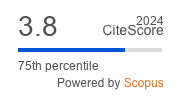Article | Open Access
Why Do(n’t) People Move When They Get Older? Estimating the Willingness to Relocate in Diverse Ageing Cities
| Views: | 5315 | | | Downloads: | 2051 |
Abstract: Two of the dominant processes shaping today’s European cities are the ageing and diversification of the population. Given that the range of action usually decreases in later life, the living environment around the place of residence plays an important role in the social integration of the older generation. Hence, spatial patterns of residence indicate the extent of opportunities for the older population to engage in urban life and, therefore, need to be addressed by urban planning and policy. The aim of this article is to study the interrelation between diversity in later life—in terms of migrant history, gender, social class, and age—as well as planned and actual (past) movements of elders. We have chosen Berlin as a case study and draw from a quantitative survey with elders (age 60+) from diverse backgrounds (N = 427). Our results from descriptive analysis and statistical hypothesis tests show that age impacts people’s past and planned movement; we observe a peak in the decisions to move at the age of 65–75 and a drop in the inclination to move among people over 80. None of the other factors is similarly influential, but we observe appreciable tendencies regarding the impact of gender and social class on planned movements. Our study suggests that variables other than classic socio-demographic data, such as apartment size, rent, social networks, and health, and their interrelations may offer a promising starting point for achieving a full picture of older people’s movement behaviour.
Keywords: ageing cities; Berlin; diversity; elders; moving behaviour; survey; urban planning
Published:
Supplementary Files:
© Hannah C. Haacke, Friederike Enßle, Dagmar Haase, Ilse Helbrecht, Tobia Lakes. This is an open access article distributed under the terms of the Creative Commons Attribution 4.0 license (http://creativecommons.org/licenses/by/4.0), which permits any use, distribution, and reproduction of the work without further permission provided the original author(s) and source are credited.


